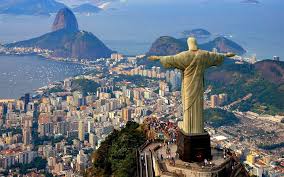The Malês Uprising , which took place in Salvador, Bahia Province, on the night of January 24, 1835, during Brazil Empire, more precisely during the Regency Period (1831-1840), represented a rapid rebellion organized by slaves of Islamic origin ( especially of the Hausa and Nagô ethnicities), who mainly sought religious freedom, however it was repressed by imperial troops.
Historical context
In the middle of the 19th century, many revolts took place in the country (Cabanagem, Sabinada, Balaiada, Farroupilha, Conjuration Bahiana or Revolta dos Alfaiates), due to the discontent of a large part of the population, from where the slaves involved sought the end of forced labor, humiliations , torture, physical and psychological violence, terrible living conditions, sexual abuse, and, consequently, aimed at ending slavery in the country (granted by the Golden Law in 1889).
In such a way, the dissatisfaction of the slaves spread through Bahia, both by the political and economic system (based on slave labor) that reigned in the country, and by religious freedom, since they were obliged to participate in Catholic cults.
Unsurprisingly, the Malese revolt represented the mobilization of about 1,500 African slaves, who were fighting for the liberation of blacks of Islamic origin, that is, Muslim slaves. In this way, contrary to the imposition of the Catholic religion, the “Malês” (Yoruba language “ Imale ”, meaning “Muslim”) came together in order to defend and maintain the religious heritage, as well as their beliefs, cults, customs, etc.
Thus, led by Pacífico Licutan , Manuel Calafate and Luis Sanim , the Malês Revolt took place in the center of Salvador, initiated by the Malês attack on the Army, which intended to free the slaves from the engenhos and seize power.
However, during the night of 24 to 25 January, the Males, who were reported, participated in an ambush, prepared by the police, which left many dead, wounded and imprisoned. About 200 slaves were arrested and tried, and the result was: death penalty for the movement’s main leaders; shootings, lashes and forced labor for the rest.
During the revolt, slaves devoted to the Islamic religion, occupied the streets in Islamic clothing and amulets containing passages from the Koran, which they believed were protected from attacks by opponents. One of the determining factors for the failure of the revolt was the weapons used by the slaves, such as swords, spears, knives, clubs, among other sharp objects, while the police were armed with firearms.
It is worth mentioning that the Malês, warrior men, bold and educated, had as main objectives to free slaves of Islamic origin, exterminate the Catholic religion and implant an Islamic republic, so that they tried to seize power, but were crushed by the forces of the empire.
Nevertheless, they organized themselves for the worship of Allah, readings of the Qur’an, teaching of the Arabic language, all always very hidden, since they were repressed and forced to accept the Catholic God. In addition, many of them knew how to read and write, a quality rare at that time, when only whites had access to knowledge.
Although it was quickly repressed, after the Maltese Revolt, the fear of the Empire and the slaveowners’ farmers increased considerably, and some measures were taken, since the ban on practicing their religious services that are not Catholic, as well as walking on the streets during the night.

